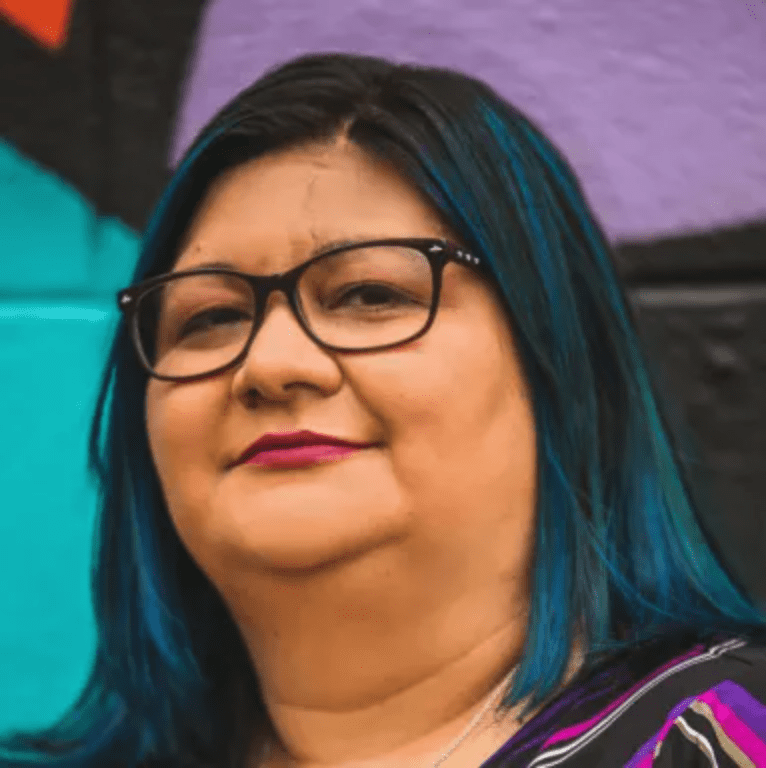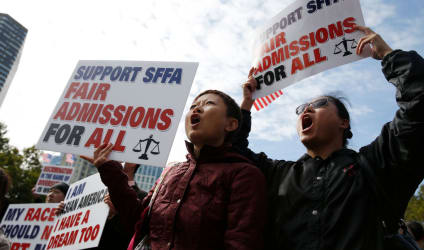5 Ways to Bust the Model Minority Myth for Asian American and Pacific Islander Students
Writer
Editor, Reviewer & Writer
Editor & Writer
Reviewer
Writer
Editor, Reviewer & Writer
Editor & Writer
Reviewer
- This model minority myth can be harmful to Asian American and Pacific Islander students.
- It fosters stereotypes and drives a wedge between the "model" group and other communities.
- Support AAPI students and programs, and be mindful of the language you use.
America's racial reckoning has been a long time coming. And this decade finds society again wrestling with systemic racism.
Several movements have started to address pervasive cultural biases. However, the concept of Asian Americans and Pacific Islanders (AAPI) as a monolith and a "model minority" still persists.
The needs of AAPI students have often been overlooked or misunderstood due to model minority myth stereotypes, said Dr. Karen Su, principal investigator and project director of the University of Illinois Chicago's Asian American Native American Pacific Islander-Serving Institutions Initiative.
"Addressing these misconceptions is an important step to advancing equity and inclusion for AAPI students," Su said.
As the Asian American population in the U.S. has grown by 81% from 2000-2019, many are anxious to burst this harmful myth. They want to ensure equal access for the diverse college students represented with the umbrella phrase Asian American and Pacific Islander.
What Is the Model Minority Myth?
The model minority myth is the long-held belief that Asian Americans and Pacific Islanders, or any group to whom it has applied, are naturally successful.
Depending on the specific variation of the myth, this may be due to the perception that AAPI people have a strong work ethic and family values and have overcome hurdles without the assistance of others.
The myth is harmful since it is a form of "othering." It's also often used to drive a wedge between the "model" group and others — especially between Black and AAPI communities. Even more, these divides often ignore the reality of people existing who have more than one heritage or ethnicity, including ones who are assigned a "model minority" label and ones who are not.
This pervasive myth can be traced to a 1966 New York Times article, where sociologist William Petersen coined the term. In his essay, he discussed the great success of Japanese Americans despite the hardships they faced even after World War II, and how they, as a people differed from the "problem minorities."
Petersen's elevation of Japanese Americans to a pedestal created a "gold standard" that subsequent generations applied to all Asian Americans and, at times, Pacific Islanders, serving as a benchmark by which other minority groups were measured.
The term caught on and has been used ever since.
The model minority myth-making was so prevalent that many accepted it, including Asian Americans who no longer wanted to be bound by the "yellow peril" stereotype and thought this was a way to escape it.
Aided by politicians, they were touted as bicultural bridges and "distinctly not Black." The myth operates on the idea that minorities can succeed in America; they just need to "pull themselves up by their bootstraps."
The model minority myth harms college students because it operates on the belief that minorities can control their fate and overcome roadblocks they might encounter. And those who cannot succeed are just not trying hard enough.
With many Americans embracing this myth, it lends credence to the idea that AAPI students are a monolith and will always outperform their peers.
How This Myth Perpetuates Stereotypes About AAPI Students
The model minority myth is dangerous because it reinforces stereotypes of AAPI students.
It conditions society to have unrealistic expectations regarding their achievement. The myth can also place undue stress on AAPI students. They feel they must measure up to this unattainable standard to succeed in America.
Additionally, perpetuating the myth negatively impacts students of all backgrounds on a college campus, particularly those of other historically excluded groups.
The myth is often used as a political and social wedge to pit one group against another. It creates tension between groups who are often truly fighting for the same goals.
Stating one group was successful because they "worked for it" implies other groups did not, perhaps due to a lack of a strong work ethic. It also implies that this is the sole reason for their "failure," not putting any blame on the inherent systemic racism they encounter.
In the past few years, college students have seen echoes of this in the headlines where universities such as Harvard were being sued partly based on this model minority ideology.
And yet, this is not the first time we have seen this in American history. In the 1920s, a similar situation occurred on college campuses with the increase in Jewish students. Harvard began to cap enrollment for this minority group.
The reason society needs to commit to dispelling this model minority myth is so that stronger alliances can be formed within the myriad ethnic groups that make up the Asian American community as the population steadily increases.
This will also support the growth of the AAPI community's bond with other minority groups in America. No longer should there be a wedge between groups who truly have the same mission — to seek an equal playing field for all.
5 Effective Ways to Bust the Model Minority Myth
Eradicate the use of these seemingly "positive" stereotypes in daily discourse: When people choose their language with more intention when speaking of AAPI people, it removes the societal pressure for AAPI students to academically excel. It also provides students who underperform an opportunity to be noticed. This may lead to better mental health outcomes for students in the community.
Dispel the myth that all AAPI people are well educated and earn high wages: The statistic of AAPI people having a median household income $12,000 above the national average is erroneously presented as a hallmark of AAPI success. In actuality, the average household income of many ethnic groups in this community falls well below the national average.
Be mindful of the terms you use to represent this ethnically diverse community: Though a significant portion of the AAPI community is of Southeast Asian and East Asian descent, no one ethnic group constitutes a majority. Being conscious of the terms you use can help dispel the myth of AAPI people as a monolith. It will also allow for the needs of individual groups to be seen and addressed.
Support Asian American studies programs on college campuses: One impactful way the model minority myth can be challenged is by supporting Asian American studies programs. Advocate for these programs to be given sustainable funding. Asian American studies programs can educate all college students about the heritages, cultures, and lives of the diverse AAPI community. They can also provide support for AAPI students seeking to venture down varying academic paths.
Read and learn about varying experiences: A great way to bust this model minority myth is to explore AAPI books, memoirs, fiction, poetry, and nonfiction. Readers can gain a greater understanding of AAPI people's experiences in the United States. Readers can also learn that people of any group, whether of similar or different ethnicities, can have extremely different experiences in the U.S.
Explore more resources for our Asian American and Pacific Islander students
Supporting you at every step of your journey.
Discover Now
Moving Beyond the Model Minority Myth
Often described as studious, hard-working, and pillars of excellence, AAPI students have long been portrayed as an exemplar for other minority students in the United States. This harmful model minority myth only serves to divide and cause fractures where there could be unity and progress.
By finally putting to bed this myth, AAPI students can truly be seen for their real, unique, and individualized identities. Additionally, it can provide a clearer path to forge allyship with other communities in America.
With Advice From:

Karen Su
Karen Su teaches in the Global Asian Studies Program at the University of Illinois Chicago (UIC). She is the principal investigator and project director of the UIC Asian American Native American Pacific Islander-Serving Institutions (AANAPISI) Initiative, which is fully funded by the U.S. Department of Education.
The initiative encompasses four grants totaling $7.1 million to enhance UIC's capacity to support programs and activities that improve the educational outcomes and experiences of Asian American, Pacific Islander, English language learner, and low-income undergraduate students at UIC. UIC was the first funded AANAPISI in the Midwest in 2010 and is now one of two in Chicago along with Oakton College and one of five in the Midwest (the other three schools being in Minnesota: the University of Minnesota Twin Cities, Century College, and Metropolitan State University).








